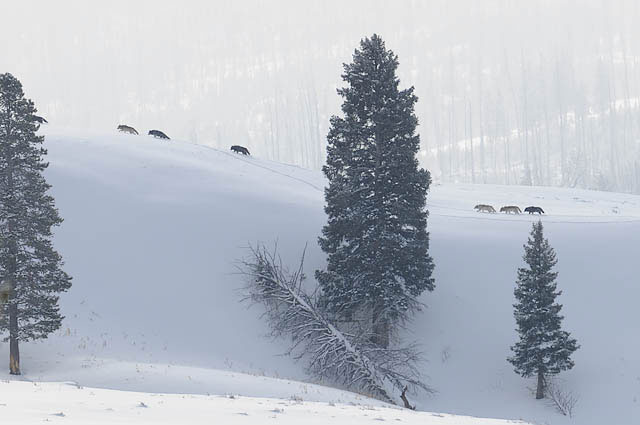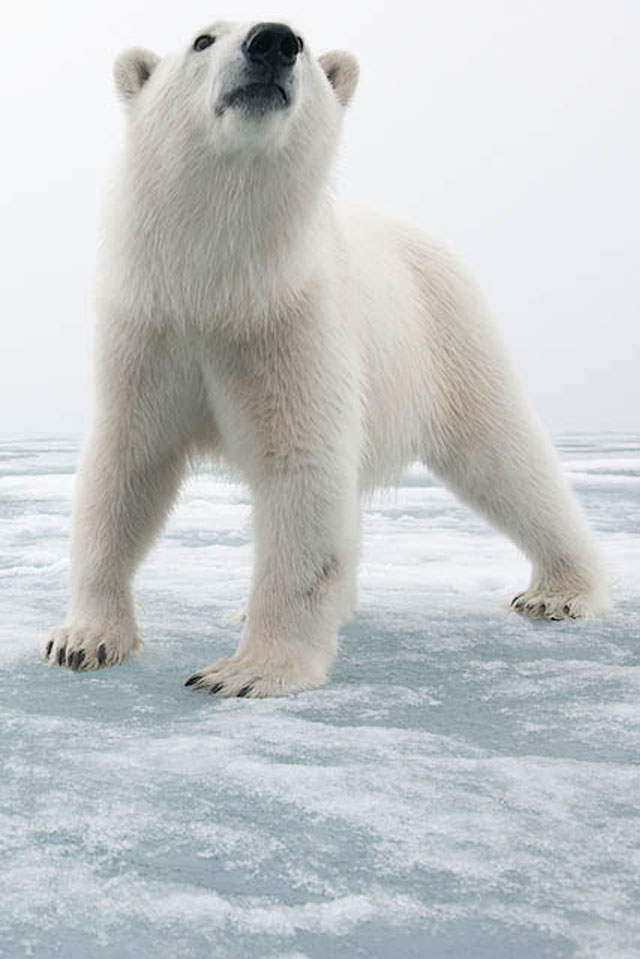Bear Season
For most people, staring into the eyes of a polar bear that's just a few inches away might be a life-defining moment. For Daniel J. Cox it's just another day at work. Then again, Dan has made his living staring down polar bears and penguins, black bears and bison, mountain gorillas and mountain lions—or at least pointing his cameras at them.
Dan is a natural history photographer whose images have been seen in such publications as National Geographic, Time, Sports Afield, American Photo, Sierra and Ranger Rick. He has made a living where the wild things are for 30 years. But it's the polar bears that keep calling him.
"I've been on all seven continents and rather deep on thousands of different subjects, but my polar bear work is, probably in the last five to ten years, the most noted," he says.
Dan practically grew up in the outdoors, first in Spokane, WA, then in northern Minnesota. "I had a dad who was interested in photography. We spent a lot of time in the outdoors, hunting, fishing, boating and doing all the crazy things you can do in the west. I really came to appreciate and love the outdoors. On top of that, I came to enjoy photography through his photography, although at that age I just remember seeing him taking pictures and thinking that was kind of neat."
When he was a teenager, Dan says, his dad encouraged him to get his own camera. "About that time a young man came to visit us, an exchange student from Japan, and I gave him $300 to get a camera for me from Japan. I thought it was quite a bargain. That's how it all started."
Dan used his camera and talent as a way to make money. In high school he got a job working for a commercial studio in Duluth, MN. In college he worked for a small newspaper, did some commercial work and wedding photography. "I drove a brand-new Toyota Celica and paid for my own school because of the weddings I was shooting," he says.
Almost from the beginning, Dan understood the power of photography. "I've always had an interest from day one in thinking that photography was a way to get to other people, to convince them that we had these areas of incredible natural beauty and animals that we should appreciate and make sure they are always part of our lives."
Dan sold his images to magazines and book publishers, ad agencies, corporations and conservation groups. He developed a large catalog of stock images for sale and sold fine art prints, too.
"In the last 10 years I really started dedicating myself toward using my work to make more of an impact," he says. "I had been working a lot, over the last 15 or 20 years, with bears, including all three species in North America, black, brown and polar. I decided I wanted to do more because of seeing the changes in the climate that were starting to take place in the Arctic and knowing that it was going to be a big issue."
Dan teamed up with Polar Bears International, a nonprofit organization dedicated to saving the polar bear. His photographs help document education and research projects supported by the group. He's also a member of the advisory board. He travels regularly to shoot pictures of what is known as the Western Hudson Bay population, near Churchill, Manitoba. It's the most notable and accessible place to safely photograph polar bears in the world, he says.
"These polar bears on Hudson Bay are the farthest polar bears south in existence anywhere in the world. It's right on the edge of the polar bears' territory. It's a unique place where they can survive by getting out on the ice and feeding on seals."
But the bears must live on the land for about four months every summer, when there is no ice. "They're basically not eating. They can only eat once they get back on the ice. About November they start coming up to this little spit of land called Cape Churchill. It's the first place where the ice begins to freeze. It's important to them because they've learned this is the place where they can get back into the kitchen." If that sounds a little indelicate, it's important to understand that the polar bears will die unless they can get back on the ice and begin feeding again, Dan says.
A substantial tourism industry has developed in the Churchill area to see the bears. Visitors travel on huge, all-terrain vehicles called Tundra Buggies. It's how Dan gets to see the bears, too. "We've had bears as close as three inches, but we're behind big, strong enclosures, basically. Sometimes they'll come right up to us and stand on their back legs and sniff us. But these buggies are up so high that they can't break into them."
Up close and personal? That's what Dan's photos say and then some.
Dan's tools of choice on trips to the Arctic or anywhere in the world include two Nikon D300S bodies, a Nikon D700 and an array of lenses, including a 14-24mm , 24-70mm, 70-200mm, 200-400mm and a 600mm f/4."
The D300S has a smaller chip in it that gives me more reach with the telephoto lens," he says. "So a 200-400mm becomes a 400-600mm lens. The D700 is what they call a full-frame body or full-frame sensor that does not have the magnification factor. You can't reach out quite as far, but it has phenomenal low light capabilities. The files are spectacular compared with any other camera on the market."
One advantage to the D300S is that it shoots video, something Dan finds himself doing more and more.
"I've really embraced videography and cinematography," he says. "Videography doesn't suggest as much quality but it really is, and it has a lot to do with these new cameras that Nikon came out with that incorporated video into the digital SLRs."
As the industry has changed in the last few years Dan has seen his career evolve as well. He teaches and offers workshops, and he and his wife, Tanya, also lead photography tours to places such as Alaska, Kenya and Costa Rica. They even lead a couple of trips each winter to Yellowstone National Park, not far from their home in Bozeman, MT. "We go to places where I've spent a lot of time. I take my camera and take pictures, but my main goal is to teach people to take pictures," he says.
Tours last from four or five days to a couple of weeks and average 12 people. The tours aren't for everybody, and Dan picks his participants accordingly. "Our trips are set up in the same manner as when I'm traveling on my own," he says. People who have a checklist of animals they want to photograph, for instance, are advised to find another group.
"There are even times when we will sit for six hours," he says, watching a wildlife adventure unfold, like the one in early 2010 when Dan and his group watched and photographed an elk being closed in by a pack of hungry wolves at Yellowstone. (It eventually got away.)
Still, Dan is quick to remember that his participants are on vacation. Some tour leaders "are known for having really tough workshops," he says. "We don't subscribe to that. When we go to these places we get up for the good light, but we don't push people until they're dead. People come away feeling they've learned a lot, but they've had a good vacation as well. There's plenty of time in the field, but I do my best to make sure everybody has an enjoyable, rewarding experience."
To see more of Dan's work visit his website, or the Polar Bears International website.
www.polarbearsinternational.org
 |
Daniel J. Cox has been an NPS member since 1981. |















